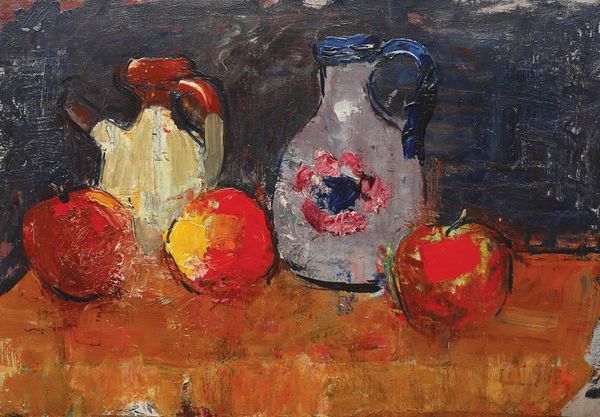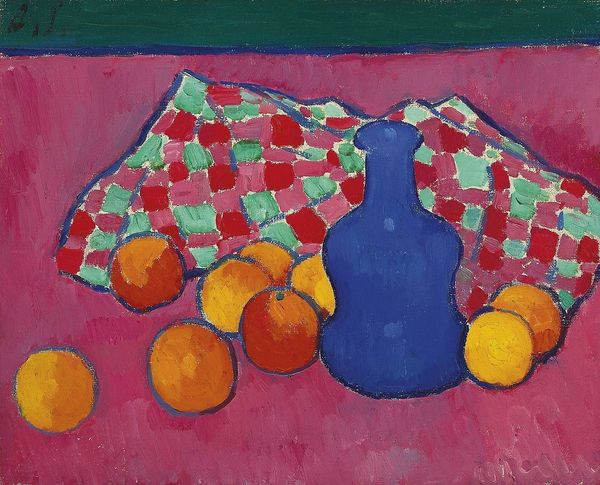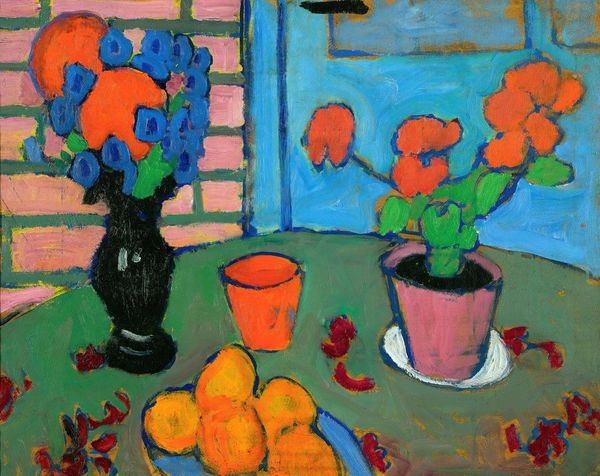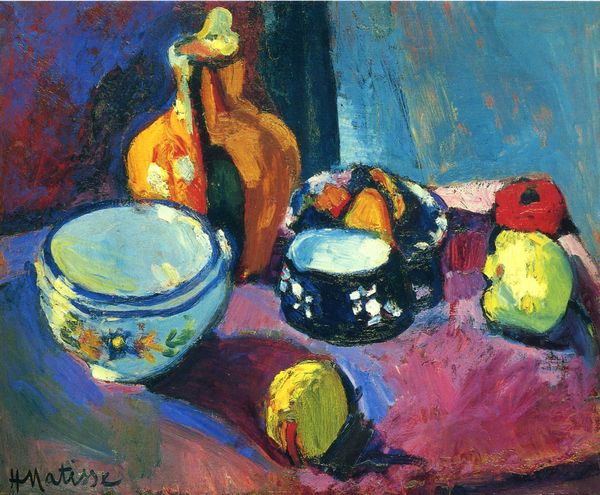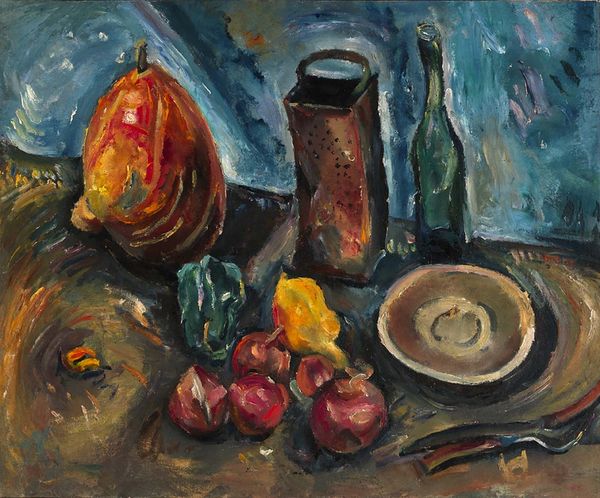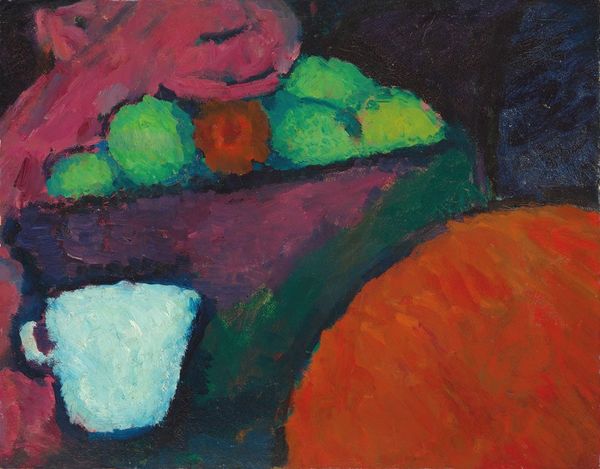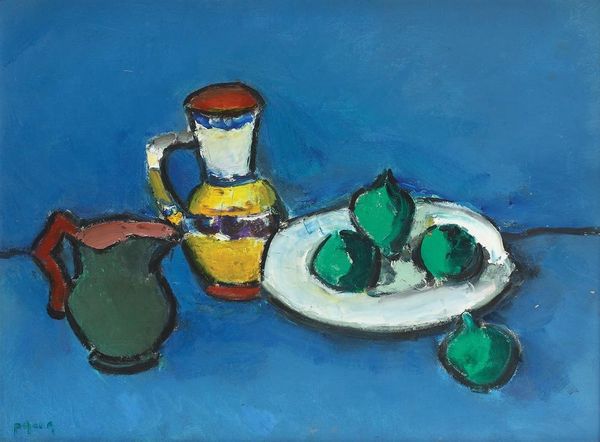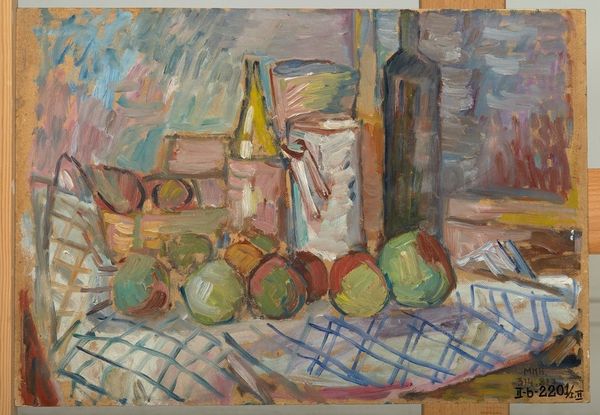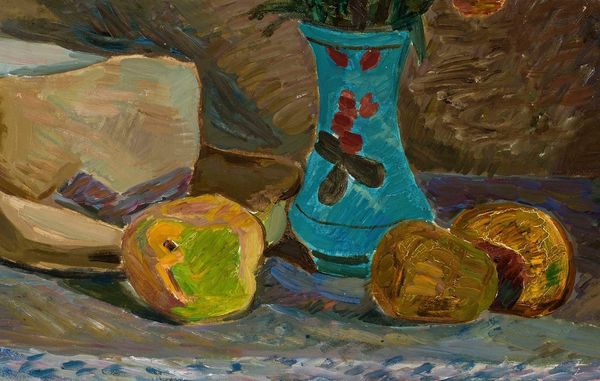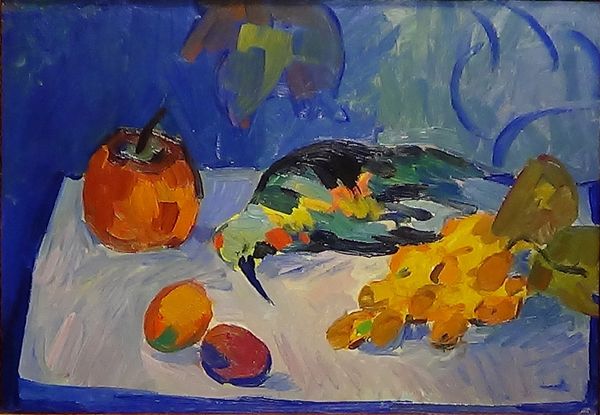
oil-paint, impasto
#
oil-paint
#
impasto
#
expressionism
#
geometric-abstraction
Copyright: Public Domain: Artvee
Curator: Welcome. Let’s explore Alexej von Jawlensky's “Still Life with Fruit” from 1910. Painted in oil with a clear impasto technique, it captures the expressive style emerging in early 20th century art. Editor: It's vibrant. Those bold outlines and blocks of color! The simplification gives it an almost childlike joy, but those dark blues hold a certain tension, don’t you think? Curator: Definitely. Let's consider Jawlensky's path. Influenced by movements such as the New Artists' Association, Jawlensky engaged with a circle interested in non-objective explorations and challenged the notion of academic painting by creating more simplified, geometrical and ultimately, expressionistic depictions. Editor: Yes, but look at the pitch, tone and hue choices. Note the dark cobalt used in the abstracted floral shapes and how they visually flatten and intensify the chromatic scale of yellows in the nearby pitcher and lemon. Even the turquoise background—each component exists to intensify the other. What can we say about his symbolic expressionism in his art through semiotic formalism here? Curator: That's fascinating! But let's consider it also from the lens of production and influence. Recall, the artists were questioning representational accuracy and embracing what industrialization and new social formations did to vision and modes of experience. Still life allowed exploration of materiality: the pigment and its application becomes expressive. This painting becomes a statement about redefining the very activity and labor involved in making art. Editor: I agree that Jawlensky has achieved to construct a unique painting where abstraction is expression; where forms represent intense emotional values and relations by their interaction, colors, textures, lines, shapes and sizes alone, without any connection to representation. And with that, "Still Life with Fruit" invites close examination and personal connection. Curator: Indeed. Its dialogue between form and materials sparks much needed ideas about production itself and how artists have engaged the radical changes in the early 20th century.
Comments
No comments
Be the first to comment and join the conversation on the ultimate creative platform.
